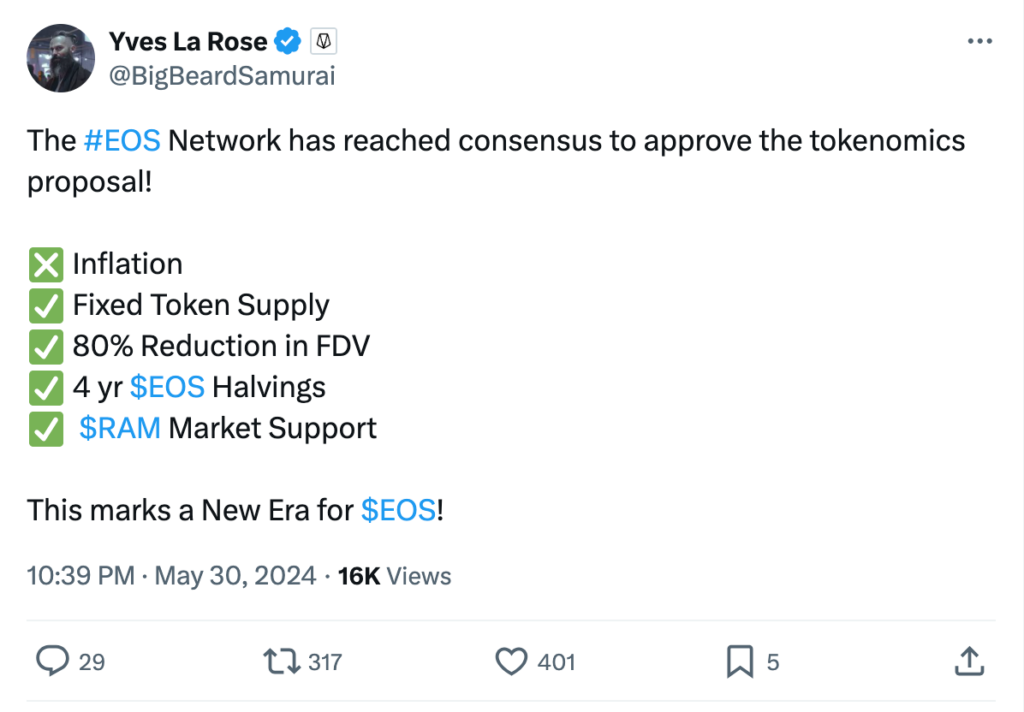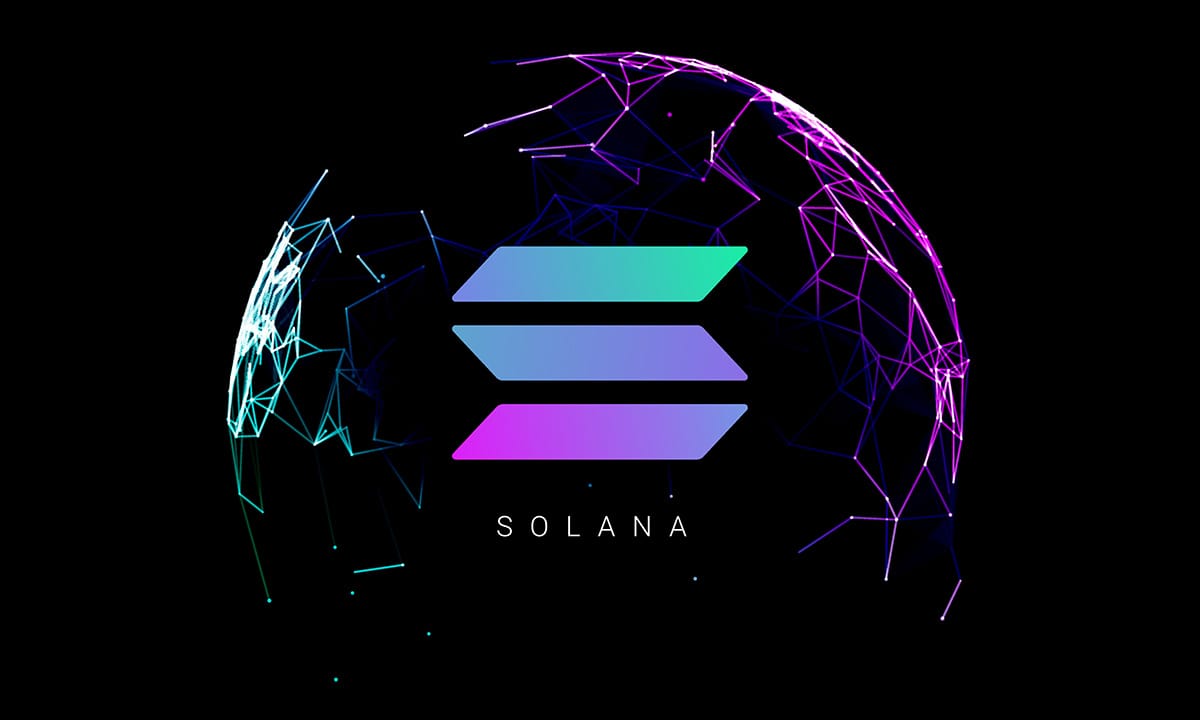Amid continued community mistrust and previous regulatory issues, EOS proposes halving cycles and moving to a fixed supply of 2.1 billion tokens.
The ecosystem has approved a new tokenomics model that promises a “new era” for EOS tokenholders and developers.
EOS will switch from an inflationary token supply with a maximum of 10 billion tokens valued at $0.80 to a fixed supply of 2.1 billion tokens, per an announcement made on May 31. The EOS Network Foundation (ENF) asserts that the action would assist in reducing inflation.
In addition, four-year halving cycles were instituted, and the fully Diluted Value (FDV) of EOS was lowered by 80%. Adding “high-yield staking rewards” with lockup is another modification; yields were not publicized.
The EOS Foundation will set aside three hundred fifty million tokens for its RAM Market, where users and developers can buy RAM (Random Access Memory) to install and operate apps on the network.
The cryptocurrency community reacted to the news of X with suspicion and uncertainty. On X, Xalytics, a pseudonymous user, wrote: “I am holding EOS from the 2017 ICO.” I don’t know what to do with this RAM news.
In response to the announcement, the token is trading at $0.80, essentially staying the same over the last 24 hours. The cryptocurrency has decreased by 21.6% since its debut, according to CoinMarketCap.
The most significant initial coin offering (ICO) in the history of the cryptocurrency market was made possible by the EOS ecosystem. The business that created EOS at the time was Block—one, which raised an astounding $4.1 billion in 2018. What happened next were court disputes, difficulties with regulators, and a failure to live up to ICO expectations.
Block. one settled with the U.S. Securities and Exchange Commission (SEC) in 2019 and agreed to pay a $24 million fine for running an unregistered securities offering during its initial coin offering (ICO).

The Crypto Assets Opportunity Fund filed a class-action lawsuit, another legal problem arising from the ICO. According to the lawsuit, Block One made several fraudulent claims during its initial coin offering (ICO), including that it would invest an extra $1 billion in the EOS network. In 2021, Block. one settled the lawsuit for $27.5 million.
The community founded its foundation in 2021 to regain authority from Block—one, which was viewed as not living up to expectations. The original block producer, Yves La Rose, assumed the role of CEO and founder of the organization.
The new tokenomics are “a landmark occasion for the community,” according to La Rose. He went on:
“This strategic overhaul will not only stabilize the token economy but also incentivize active participation and growth within the network.”
Layer-1 blockchain EOS was created to facilitate decentralized applications. In its early days, the network marketed itself as an “Ethereum killer.”



